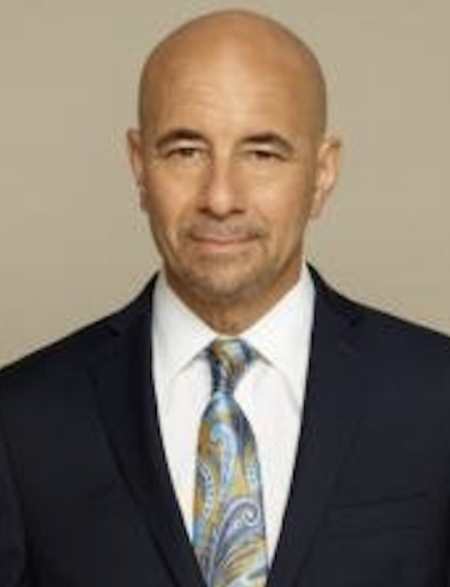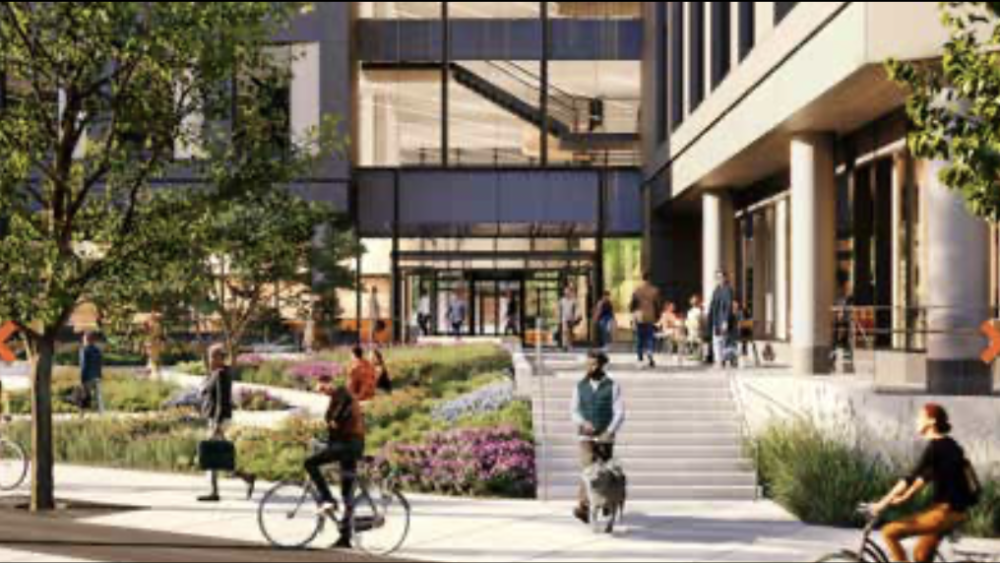
The property—at 22 Drydock Avenue, in Boston’s Seaport District—is slated to be the city’s first life sciences building to achieve LEED Platinum and net-zero carbon emissions.
In early April 2024, Small Change, an investment crowdfunding platform for real estate development with social impact, and Boston Real Estate Inclusion Fund (BREIF) jointly announced an investment opportunity in a $430 million life sciences building under development by Related Beal. The property—at 22 Drydock Avenue, in Boston’s Seaport District—is slated to be the city’s first life sciences building to achieve LEED Platinum and net-zero carbon emissions.
BREIF was the vision of prominent Black developers—Massachusetts entrepreneur Darryl Settles; Richard Taylor, former vice president of development at FMR Properties Inc.; and Kirk Sykes, co-managing partner of Accordia Partners LLC, a Boston-based real estate investment and development company. The purpose of the fund is to provide an opportunity for diverse accredited investors to invest in institutional-quality assets.
Sykes, with whom we spoke late last week, previously served as the head of Urban Strategy America Fund, an urban investment, development, and redevelopment commercial real estate equity fund focused on investment returns, economic development, and environmental sustainability. He is a past chairman of both the Real Estate Executive Council (REEC) and the Federal Reserve Bank of Boston. He currently serves as trustee at Natixis Loomis Sayles Funds and is a director at AIMCO.
Urban Land: Why is BREIF important? And how does it stack up next to other funds that seek to create greater equity within the BIPOC investment community?
Kirk Sykes: Let’s start with the explanation of the name—Boston Real Estate Inclusion Fund. It’s a bit of an oxymoron, because it’s really a special-purpose platform to sponsor single investments rather than a closed commingled fund, meaning we’re able to present possible investment outcomes with a lot more confidence because it’s very hyper-focused on one asset at a time. So, there’ll be another investment after this, and an investment after that.
UL: So, you’ll close out an investment, pay your investors, and then raise money again for the next project?
Sykes: You got most of that right, except we won’t have to pay back investors in a particular deal before we embark on another investment, which may be with a different developer. Each one will be funded separately, but each one will be in alignment with Basis Investment Group. But this specific investment—22 Drydock—is a $430 million, 340,000-square-foot (31,590 sq m) biopharma R&D building in the Boston Seaport. It has one tenant: Vertex Pharmaceuticals. And the reason all that is important is because this is the last dollar in rather than the first dollar.
Related Companies was selected a few years ago by the City of Boston to develop 22 Drydock, as the parcel is called. It is a single-purpose investment as part of a biotech campus that Related is helping Vertex build in this portion of the Seaport, and this is R&D as opposed to office.
Vertex really kicked off the life science boom in the Seaport some 20 some years ago, with the tower in which their headquarters is located, so they have a million square feet (93,000 sq m) in this market, and some of that is office.
But . . . this is actually space for production of very successful drugs that recently . . . hit the market—one for sickle cell, one for cystic fibrosis. [They’ve] been doing this for a long time. [So,] the tenant was prescribed, the developer was prescribed, the site was selected, and the partnership between Basis and Related began last year . . . and closed back in September.
Basis is an SEC-registered investment adviser that has discretionary capital from institutional investors. Typically, when people invest with a developer, they are doing it based on the developer’s underwriting. In this case, Basis underwrote the project for its institutional investors, which are pension funds and other significant institutional investors. Basis is an objective third party between the developer and the retail investor; it’s doing the underwriting from the perspective of not needing need to do the investment. Basis will only do the investment if it makes sense and if it is expected to be lucrative financially.
In this case, we could look to Basis’s underwriting to support an offering to accredited retail investors who were interested in positions of $50,000 or more.
Also, Basis is a minority- and women-owned platform, arguably the largest in the country. It has been serving investors in other projects for more than a decade. And over that decade, the company has done almost $6 billion of transactions, of which a billion and half dollars or more has been with women and people of color.
So, the importance here is that our investors are benefitting from multiple levels of success, from the perspective of having a $10 million investment from a diverse capital source, which was achieved last year, followed by our syndication of $3.75 million of that investment to bring in retail investors.
Put another way, we further diversified the capital stack from a single, big, diverse investor to now include multiple investors—almost 40 women and people of color. While the offering is not exclusively available to that group, we are using our network to target diverse capital.
And that’s what I meant by saying . . . the last dollar in versus the first dollar, because you’re syndicating a portion out of a fully capitalized $130 million equity stack for a $340 million property that is fully financed: debt that was put on it about three months ago from Santander Bank.
So now there’s a great degree of confidence in the outcome, from capitalization, from tenancy, from execution, with Related being one of the top developers in America, and with Vertex as a 30-year, in-this-market tenant with a balance sheet that has $10 billion of cash on it, so well capitalized to bring their drugs to market, which means their tenancy will be sticky, and as well as their involvement as an investor alongside us.
UL: So, retail investors typically can’t get into a deal like this?
Sykes: Mostly because of the size of the investment. It’s not efficient to finance a $430 million project with small tranches of capital.
The reason it’s happening is because, if you go back almost 20 years in Boston, which historically was not thought to be the most inclusive place in America, the Port Authority of Massachusetts decided, as part of any RFP for the sale of its land, that basically comprised the Seaport, the authority would make 25 percent of the selection criteria—how you were addressing inclusion in construction, in design, in finance—and several projects, starting with the Omni Hotel, were built with that construct, and the teams were selected accordingly, and that helped minority developer investors scale in the Seaport.
Fast-forward some 20 years later, and the Seaport is almost entirely built out now, the city and the state have adopted similar criteria or desire for inclusion, and have asked developers to make it a basis of what they are doing to develop in this market, which is so successful.
UL: How does Small Change connect investors with the Boston Real Estate Inclusion Fund?
Sykes: Small Change is an online vehicle, a way for people to make their investment, to receive their investor reporting, get their taxes and K-1 type of notices. Small Change made it easy to put a lot of information in one place for retail investors to make the decision to invest.
It’s not a crowdfunding investment. It is a vehicle for aggregating accredited investors. We are Small Change’s largest investment ever to be done, and we couldn’t do that in small crowdfunding units.
Once you sign up with Small Change, and once we confirm that you’re a legitimate investor, we will then give you the right to view the offering memorandum. Then, once you make your investment through the portal, that capital is aggregated.
We also we have a fund administrator called Catalyst do a “know-your-customer” evaluation of each investor. That information can be uploaded through the portal . . . so it’s a way to reach out to a broader universe of investors. And Small Change, to its credit, has a desire to increase access for women and people of color to invest, so the company was willing to let us ask for self-identification by the investors, so that others can have a chance to take a look.
To be an accredited investor, you have to have a net worth of a million dollars or more, or an annual income of at least $200,000 for the prior two years.
UL: Who is the typical investor reaching you through the Small Change portal?
Sykes: We don’t have any prohibition other than that investors meet the accreditation criteria. About 30 percent of them are people from our network at the Real Estate Executive Council, people who are in commercial real estate, either as an entity or as an individual. But in all cases this is a personal investment for them.
Some of the investors live in the Boston market. There was a group of Black women in finance, whom I addressed some time ago, and one woman aggregated a group of them to come in. They are knowledgeable investors in their own right, but not necessarily in real estate.
Our goal was that at least half of the investor pool would be women and people of color. It’s become more than that. That’s not to say that this deal or any other deal will be 100 percent people of color and women, or any other percentage. We don’t we don’t have that level of prescription, but we have an aspiration and a strategy.
UL: What kind of return can investors expect, and how does that measure up against what retail investors might get otherwise? What’s the monetary opportunity here?
Sykes: If you go on the website, you can see that we project a roughly 17 IRR [internal rate of return] and a 1.7 multiple, and that’s premised on an exit in year six. We have unique aspects to the investment because its 100 percent tenanted by one tenant, so it reaches stabilization immediately upon completion. Thus, there’ll be an opportunity to do a refinancing that may have excess proceeds, though it may not.
We’ve negotiated a put so that the retail investors can get out of the venture when the institutional capital does.
UL: You have broad view of the national market and its players. Is the fund a Boston-centric unicorn, or is it something like: okay, we see a way to do a Los Angeles fund or a New York fund?
Sykes: Absolutely, it’s a replicable model that either we or other people can do. The unique aspect of BREIF is the relationship with Basis, in that Basis, being able to both underwrite it for institutional investment and evaluate a number of deals and say ‘yes’ or ‘no,’ gives us the potential to get the same kind of institutional construct that is not available to retail investors normally.
Basis is national, so there may be other markets where this aspiration of including women and people of color is part of the criteria, and Basis can help do a double whammy with its own diverse asset manager/capital manager status, and then bring in BREIF to raise a retail sleeve of diverse capital . . . . So, yes, it could be done elsewhere. But . . . there’s only one Basis, and right now, to my knowledge, there’s only one BREIF. But we could do it again somewhere else.
UL: What is the potential for this fund to be a game changer to create greater equity for BIPOC investors in real estate?
Sykes: Huge. I mean, right now, the only limitation is how many accredited investors of color exist who would want access to opportunities like this. It’s limited only by the universe of people who want it or want to participate in it. And, as I said . . .I don’t know of anything like it . . . any other platform that has taken this approach or has this degree of sophistication.
This is an exciting investment opportunity which has already raised $3M of the available $3.75M. There are roughly 60 days remaining before we close the offering.







